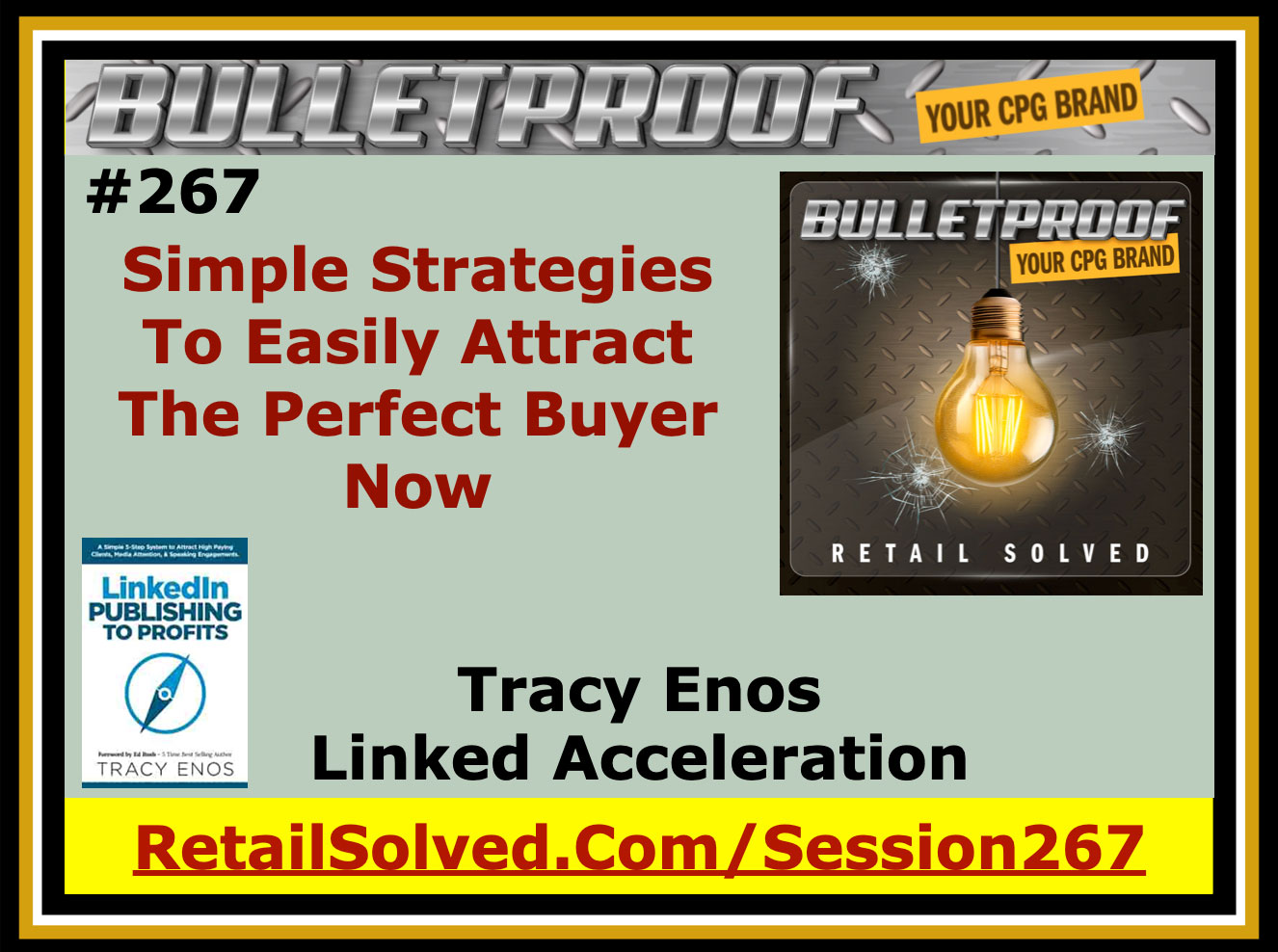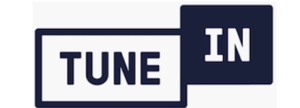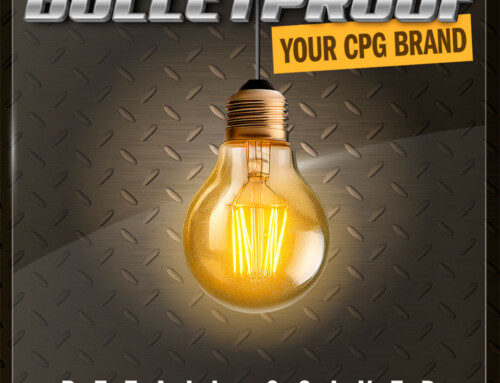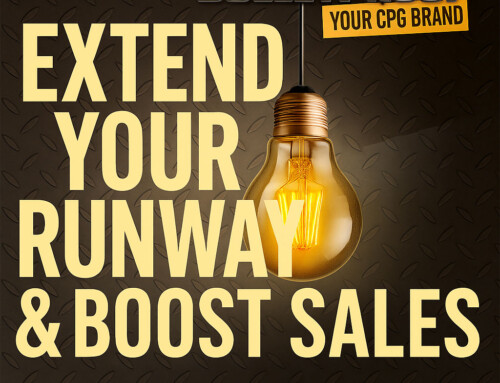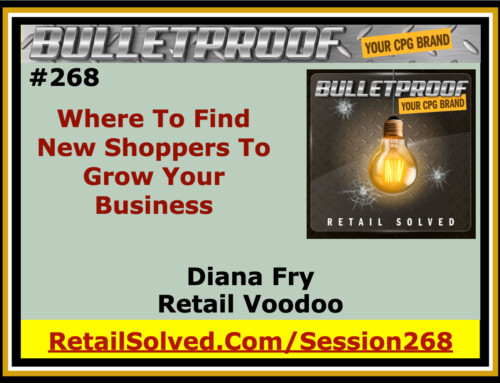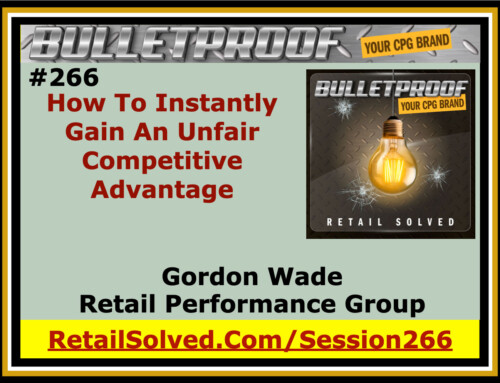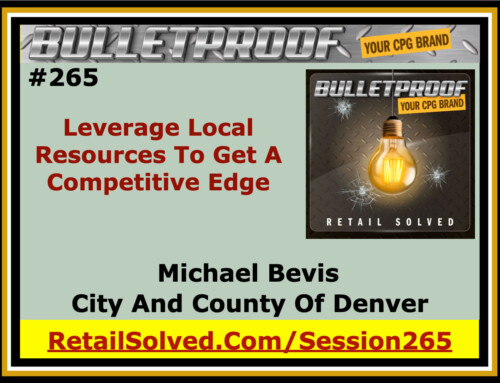Unlock simple strategies to easily attract the perfect buyer and enhance your sales success with these actionable tips. Tracy Enos with Linked Acceleration discusses her book asked is your LinkedIn profile costing you opportunities? She highlights a creative strategy to engineer business opportunities for busy executives. This is how you attract the perfect buyers for your products to grow and scale your brand.
Listen where you get your podcast
Important: Brand Secrets and Strategies has been rebranded to Retail Solved. Please swap all BrandSecretsandStrategies.com URL’s with RetailSolved.com. This is now the Bulletproof Your Brand podcast. Thank you for listening! Well, in the beginning, I didn't know what I was doing. I didn't know who I wanted to work with. I had to go through the gamut of solo preneurs to the large, I've worked as large as a $50 or $50 million a year SaaS company. Along the way, I figured out who I like to work with. But over time, I realized, who are the decision makers? What are their titles? And a lot of times the decision makers are on LinkedIn, but they're not active in LinkedIn. And so who are the people that are reporting to the decision maker who can get your foot in the door in front of the decision maker, right? That's what we call getting past the gatekeeper. So LinkedIn says that 92% of all CEOs are on LinkedIn, but I promise you they're not active in LinkedIn, especially if you're going after a larger retailer, per se. I doubt they're going to be that CEO is playing in LinkedIn. And if he is, it's probably on a Sunday night when he's got nothing else to do, the kids are in bed. LinkedIn is one of the most powerful networking tools, and it's the easiest way and the best way to find the people that you need to get in touch with, like brokers, retailers, et cetera. Do you want to learn more on how to use this valuable resource? Let's start the show. I'm always looking for creative ways to help you grow and scale your business. And that includes helping you get in front of the right people, the right investors, the right mentors, the right consultants, the right brokers, the right retailers that can help you grow and scale your brand. LinkedIn is an invaluable resource in this area that can help you identify exactly who you need to talk to, as well as all the people in their inner circle. As we continually talk about on this podcast, having the right people in your corner and knowing the right people to talk to can literally shave years off your growth strategy. Knowing the right people could literally be the difference between bootstrapping your brand and growing slowly to exploding your business almost overnight. That's what this episode is about. And using LinkedIn is one of the best, most effective ways to do this. Are you ready to learn from a LinkedIn expert? Here's Tracy. Tracy, thanks for coming on today. Can you please start by telling us a little bit about yourself and your journey to where you're at today? You've got a great story, and I'm anxious to hear all about it and how you're able to leverage LinkedIn, especially LinkedIn, to grow your business. Hi, Dan. Thanks for having me. It's a pleasure to be here. So what part of the story do you want me to start from? So there's a middle story that I think is very interesting for a lot of folks, but there is how I got started on LinkedIn was quite by accident. I mean, I just the bottom line is how did you how and why did you end up going to LinkedIn? How did you find LinkedIn as a platform where you could grow and scale your business? And what I'm getting at is go ahead. Oh, well, I was going to say, well, I joined LinkedIn in October of 2009. But like a lot of folks who still do that, they get on there and like, now what? Right. And so I had a realtor friend of mine was in the mortgage business that like did a little webinar on keywords, using keywords on LinkedIn. So it was like my first introduction to keywords, didn't know what that was, right? And showed us how to use keywords in your profile to get found on LinkedIn. So I updated my profile at that time, this is probably back in 2011, 2010, 2011, somewhere in there, and didn't do anything with it still. And then that, well, the housing crisis had hit. And so I had lost my job the first time. So that's how I got involved with LinkedIn. National City Bank, like a lot of you, I was in the mortgage business, they fired me, was one of the banks that got bailed out by the government. Anyway, so second time around, I got back into the real estate business, didn't have a book of business here in KC, even though I was a realtor broker for 10 years. And I didn't have any income coming in. So I needed a job. And so I found my job on LinkedIn. And it was for a nutrition company, Alcarls by California, and they did demos of their health products in all the sands clubs and Costco's around the country. So I went in, I got a job, I got my location, we have like seven of those within the Kansas City area. And within a week, I was a lead. Within two months, I was field regional manager in charge of 83 stores in seven states. And we, I was part of my duties were to interview and get the new demo folks hired and I reviewed, you know, all their their job applications through Craigslist and LinkedIn. So I spent a lot of time in LinkedIn in the evenings after I was done doing the demo stuff and traveling and whatnot. So I played in the trenches a lot. And then a couple months later, I got laid off again. So not not, you know, I didn't do anything wrong. I was making six figures things are going great. My territory was awesome. But they partnered with one of the largest pharmaceutical companies in the country and blew through $3 million in like three months. And so the pharmaceutical country said, Look, hey, we're gonna have to figure some things out. We're pulling out as investors. And so they fired everybody in the field except for one. And I happened to be one of those that got fired. And yeah, so I was jobless again, laid off from corporate America twice in four years. So I had been dabbling, you know, I had a side gig, you know, I kind of wanted to at some point in time, I wanted to, you know, develop my own business, I've always had this entrepreneur spirit. Everything I bring to the table was real estate and mortgage, I always had outside of the box marketing ideas. And I was the first one to implement them in the office and things like that. And so this wasn't any different. And so I started doing some like, back then, it was like really Facebook was the hot thing, right? So I started helping people set up their business pages and do their artwork for their cover photo and things like that. And then my sister happened to be a graphic artist, and I showed her what I was doing that summer before I got laid off. And she said, keep up the good work. She liked what I was doing. But then when I got laid off, I didn't know what I was going to do. Single mom, I've only got a few thousand dollars left in the bank. I'm going through it fast, you know, two kids, what am I going to do? So my sister, she had brain cancer, inoperable brain cancer. My sister-in-law called me says, look, you need to come see your sister, Terri. She's starting to lose her short-term memory. So I flew in day after Christmas that year, and we had some glasses of wine, and she sat and talked with me one-on-one and said, look, you got a good thing going. You just got to just do it. You're possible. And she had these little dog tags that said, instead of impossible, it says, I'm possible. And she gave those to me. And that's when I started my digital marketing agency. But it wasn't easy getting clients in the beginning. Going to the B&I meetings, the chamber meetings, other network meetings around the city, got expensive. I like my wine. So drinking a lot of wine and not coming home with any clients was not conducive to starting a good business, right? So I did get my first client through one networking event, and it was a LinkedIn client. And it was a startup biotech here in KC. And so that kind of began my LinkedIn career. But when I couldn't get anybody to use my services in my own backyard, I started looking for clients on LinkedIn. And that's where it started. And my very first big client was a commercial roofer out of Philadelphia. Then I started getting clients like I had another digital age marketing agency out of Houston. Then I started getting clients in Canada. And then it just ballooned from there. And then those clients were like, how are you doing it? Can you do it for us? And so that was the dawn of the new age of my consulting business. And I love your story because that's so relevant. And the reason I was so thrilled when you reached out to me is because it's so difficult to find good talent, first of all, and then to understand a little bit about them, who they are, where they come from. And what I'm getting at Tracy is this. When I do a project for a client, when I'm working with someone, I always go into LinkedIn and look at their background. I want to know what kind of people they associate with, what kind of people they hire, what kind of people they align themselves with. And that's critically important. But to go one step further, to be able to leverage that platform, to be able to find potential clients as a goldmine. And so, in my world, the strategies that a lot of brands use is that they go to a broker or to someone else to get in front of a retailer. But yet, using the strategies that we're going to be talking about here, you could use that same strategy that you're going to be talking about to be able to get in front of that retailer potentially directly, or certainly to learn a lot about them. So, talk more about how you learned how to get a hold of the right people, how you were able to identify who were the contacts you wanted to get a hold of, and to cut through all the noise to find the ideal contacts. Well, in the beginning, I didn't know what I was doing. I didn't know who I wanted to work with. I had to go through the gamut of solopreneurs to the large... I worked as large as a $50 million a year SaaS company. And along the way, I figured out who I like to work with. But over time, I realized, who are the decision makers? What are their titles? And a lot of times, the decision makers are on LinkedIn, but they're not active in LinkedIn. And so who are the people that are reporting to the decision maker who can get your foot in the door in front of the decision maker? That's what we call getting past the gatekeeper. So LinkedIn says that 92% of all CEOs are on LinkedIn, but I promise you, they're not active in LinkedIn, especially if you're going after a larger retailer, per se. I doubt they're going to be that CEO is playing in LinkedIn. And if he is, it's probably on a Sunday night when he's got nothing else to do, the kids are in bed, he's relaxing, getting ready for the next work week. But I think over time, I did learn a lot going to other conferences and seminars. I was a Dan Kennedy student, and I did adopt something from Dan Kennedy that works incredibly well in LinkedIn, and it's called developing your USP or your unique selling proposition. And what that does is it sits you down and defines what the client wants. What are they afraid of? What are their biggest desires? And what's keeping them up at night? And I think my favorite line there is, esophagus boiling, unable to sleep. And I was like, something like that. I'm like, ooh, I could visualize that. Yeah, that's like that acid reflex. Yeah, I get it. That keeps them up at night. How am I going to pay my employees? How are we going to increase our revenue? All those things is what keeps a decision maker up at night. But not only that, I learned to sit down and define who are they? What are those demographics? And if you're using or hopefully your clients are using Sales Navigator, you have an opportunity to tap into about 30 different filters to really refine your search, to find who it is that you want to connect with and build a relationship with in LinkedIn. So that's the demographics. And then how are we going to message them? What are we going to say? What kind of content are we going to put in the newsfeed? What kind of messages are we going to send to our client? I mean, what are we going to put up on our company page? Last for the cycle graphics come in, right? So we need to know, you know, the fears, desires, like I just mentioned, developing USP. How are you different than the competition? Who are your clients following? Who are the influencers? And you can go dive as deep, and I don't personally, but I have some clients that do as politically or religiously, depending on if they're a nonprofit or whatnot. You know, and maybe they're more on the business end of things. So maybe they're following the Shark Tank fellas, you know, or maybe they're following some of the influencers in LinkedIn, like Richard Branson and whatnot. So if you can sit down and define that, you've got a good grasp on who your client is, and this way you now can develop, what is it that you're going to say when you reach out to this person, right? Without sounding salesy or scammy or spammy, right? And then what are those follow up messages going to be? Because ultimately LinkedIn is a platform to build a relationship with somebody and ultimately get them off of LinkedIn. Because at the end of the day, you don't own that platform and you don't own your connections. You only own them when you get them off of LinkedIn and then they're in your own CRM. Absolutely. And thank you for sharing that. So when I had a conversation with Seth Green, we were talking about exactly this, the importance of defining or understanding who your ideal avatar is, meaning who's your core customer and the challenges. And I talked a lot about this on the podcast throughout all my episodes, throughout all my content, that so many brands are so focused on trying to be a little bit of something to everybody that they overlook that ideal customer that they should be focused on. Instead, they should be laser focused on that ideal customer who gets it. To your point, going back to your story earlier, your ability to communicate with those people that understood the benefit of what you were demoing, etc. Those are your ideal customers. If you had tried to demo to people that had no clue or no desire, no interest, you'd been wasting your time. So your ability to identify that unique... Well, do you want to expand on that? Please do. Well, no. I mean, you're doing a great job. I can come back in a second. But it's that niche. It's that ability to understand who your ideal customer is. And that, I think, is where your secret sauce is. I don't want to put it that way. Your special gifts are. So when you're talking about LinkedIn, how do you help a client identify who that avatar is or what your unique selling proposition is so that you can align the two together? We do foundation work. And I think what a lot of folks do when they first get on LinkedIn or they try to get back in and get re-engaged and active in LinkedIn, is they're forgetting to do the work offline before they start doing the work online. And that's what we just talked about. You got to sit down and define in writing, who's that person, what do they look like, you know, title, age, demographics, you know, whatnot. Then you got to define the fears, desires, who they tried in the past, what did they like about them, what didn't they like about them. And you really have to have a pulse on your competition because that's what's how you can explain how you're different, your business is different than the guy down the street. Right? Yes, exactly. Continue. But we take all this information, and this is how we develop a really great profile that's not only client facing with that information, but also has the keywords. What is the client thinking like the prospect? What are those keywords that they're typing in to LinkedIn to find a product or service to solve their problem or fulfill that ultimate desire? Right? And LinkedIn is a search engine after all, and I don't think people realize this. You know, LinkedIn gives you, you know, although crappy, some analytics about how many times you showed up in the search for whatever keyword that is. And you're hopefully search, you know, hundreds of times, if not more, right? But if you're not putting these keywords in your profile strategically, no one's going to find you, organically anyway, right? So we want to have a balance between direct outreach and getting found organically as well. And then once you have compiled all this information, now we develop this profile. But another, sorry, this storm is getting pretty bad over here. I'm getting a little distracted. My apologies. No, we're still good. There's no good. Another thing I think people forget is the human side. This is a personal profile. This is not your company page. This is not your brand culture or anything like that. This is you. It's about you. Even though we're talking about the who in the profile, what is it that you do for them? Who is it that you work with? How do you do it? How you're different than your competition? And at the end of the day, what kind of results they can expect working with you? You got to have the human side. It's that likability factor. People want to know that not only can you get them results, but I want to like you doing it. No one wants to do business with somebody they can't stand. Right? So you have other sections in the profile that I think a lot of people are, they're not filling out like organizations, volunteer work, projects that you are, you know, particularly proud of, whether they're projects that are related to your business or project that are not related to your business. What about honors and awards? What about publications? Whether you've written them or somebody's written on your behalf or they mentioned you in them. Add all that stuff. I had a client just a few weeks ago in Nebraska, good old boys and girls. I mean, I just love them. It's Northern Nebraska, but they have an industrial and commercial roofing company. And he did not, he was adamant about putting his military experience in there. And I was like, how many years did you serve in the military? It was like 20 something years. I'm like, why isn't in there? Well, I didn't particularly, I said, that's not the point, whether you've got to be with the military and how you were treated. But I'm going to tell you what, I've got more people that have messaged me because of my military experience and have worked with me because of my military experience and anything else. I say it's because we had something in common or that it was a likability thing, whether or not they were in the military, they knew somebody that was or a family member. And right there, I was instant like, you know, and just a few weeks ago, I wouldn't have gotten on a podcast as a guest had I not been in the military. That was a prerequisite of his. He only talked to business people who had prior military experience. And the cool thing about it is, is because I put what division I was in and what I did in the military, he happened to be in the same division. So we just chatted it out like, you know, two old folks that knew each other for the last 10 years. I mean, it was neat. But if you don't have that in your profile, how is anybody going to know, you know, that you have that? I mean, little things like that. Maybe there's an organization that you support, that they support too. Well, how would they not know that if you didn't have it in there? Or what your role is? You know, people like people that they know, like, and trust. And that's who they want to do business with. First of all, thank you for your service. But absolutely. I love your story. So what I always talk about is the fact that our LinkedIn people think of it as a job, as a online resume. And I hate when I used to be a hiring manager, someone give me a resume and said, I show up to work, I turned on the coffee machine, and I went home. First of all, you're not going to get hired for another job. But to your point, to have in, what did you do? What successes did you have? I love the analogy that you put in there, that you shared, because it's at developing that point of commonality, that connection that you have with people, because that's what I always look for when I work with anyone. Again, going back to why I would look into a LinkedIn profile. Is there any point of connection that I can make so that when I'm talking to someone, instead of just saying, hey, I'm a nice guy, hire me or whatever, here's how we relate, or here's how I understand your pain point, etc. So good idea. So now, one of the things that you other talked about, one of the things that you talked about was Sales Navigator. So I want to talk about that for a minute because what's the difference between Sales Navigator and a basic account? And the reason I want to talk about this Tracy is because a lot of people don't understand the benefit of it. So when they think about LinkedIn, they think about just another social media platform. But LinkedIn is a lot more powerful than that. So what does Sales Navigator do for you? And then how do you help your clients leverage it? Sure. Well, there's three different levels of profile memberships. There's the free or the basic. Then you have business premium and then you have Sales Navigator. And even then, there's three levels of Sales Navigator, depending on how big your organization is. For most folks, the pro version works just fine unless they have a team of at least 10 people or more. So the free allows you to do whatever you want in LinkedIn, the regular LinkedIn. Sales Navigator is a separate tool. However, it has its limits. So for example, people who viewed your profile, you can only see five people per day. But on Business Premium and Sales Navigator, you can see everybody in the last 90 days. What would happen if you put up a post in the newsfeed that went viral and that post went out to your connections, second and third connections, and that's because it went viral, and they're coming looking at your profile and you only got to see five people per day? That would suck. Like in the last 90 days, I have almost 3,000 people that have looked at my profile. That's great. There's gold nuggets in there. Oh, yeah. I mean, they could even be your first connections because maybe you haven't talked to them for a little while. Well, this just is an opportunity to go and reengage with them, right? Stay front of mind. And then you have the ones that are maybe second or third connections. They might be your ideal prospect. How do we know they might be our ideal prospect? We already did our homework. We did our foundation work, right? So it gives you an opportunity to go in there. Secondly, the free and business premium only gives you a few filters. Didn't I just mention a little while ago, you get about 30 filters between accounts and leads and sales navigator. Which one would you rather have? I'd rather have the one where I can really filter out, you know, geography, postal code. I can filter out metropolitan area. I can filter out which country. I can figure out titles. I can figure out function. I can go in and look at who belongs to a group that I don't actually have to belong to in order to go see who's in the group. That's awesome. I love that too. And there's so much more in there that you can do. It's a fantastic prospecting tool. It even has its own newsfeed. So people that you save as leads, you do not have to be connected to them. You just save them or you can, it's your choice. But then LinkedIn gives you updates, talking points to stay front of mind and get connected and engage with those people that you have saved as leads. So like if you sat down and wrote out your hot 100, I would be saving those people on a lead list. And then any of their activity on LinkedIn, whether they're mentioned in LinkedIn, whether they're posting anything in LinkedIn, before you had that in Sales Navigator, we would have to go like have a spreadsheet of these hot 100. And we'd have to have their profile links. And we'd have to go there every day and go look at their posts. And it takes a few clicks, clicks. It was very time consuming just to go engage with their stuff. Well, now, Sales Navigator makes that so simple for you. And in fact, you can save 1500 leads. I think that's more than enough. Oh, that's good. That's great insight. That's great information. Well, you know, one of the things I've also loved about LinkedIn is that this is a small world. And the people that I used to bump into years ago, I'm coming across again and again and again. And so the ability to reach out to them and reconnect with them and ask them for an invitation to introduce me to someone else, that's great. So even though I don't have their current email address, because I'm connected to them, because I connected with them back when I worked with them, et cetera, allows me to still remain connected to them. There's so many great tools and ideas around how to leverage LinkedIn, not only as a prospecting tool, but as a tool to develop relationships and develop that no one can trust. Your book behind you, LinkedIn Publishing to Profits, I know that you're in the process of updating it. Tell us a little bit about the book and what's in it, and then how we could use it to our benefit. Well, this book, by the way, is a little out of date. But the whole first chapter talks about the profile and the foundation work. You got to have that. Look, I can't remember exactly what my analogy was. So when I had a digital marketing agency, so we were building the websites, doing reputation management, Google Maps, all that fun jazzy stuff for local folks. They would want to go and get into the reputation management, but they would want all these, they wanted the stars and the reviews and everything like that prior to even having a reputation. Or they've got a really bad reputation. So until you've done your foundation work and really have nailed it in on who you're doing, I mean, why are you throwing money at marketing? When you have no reputation, your profile looks like crap, period, right? So what if you start posting some great content and then something goes viral on you and then somebody goes back to your profile and goes, you know, you just lost opportunity, right? Oh, yeah. So the whole first chapter is all about that. The rest of the chapters, and like I said, really out of date because this is 2018, LinkedIn has now added a whole lot more fun features for content marketing and stuff like that. So those aren't in here. That's why we're rewriting it. But we talk about articles. It was mainly about articles in here and some of the stuff in the newsfeed. I have a bonus chapter about getting, you know, active in the newsfeed and stuff like that. But I do have a case study in here. And by the way, all the links in here don't work because we pulled them because we're rewriting everything. But I have a case study in here about a gentleman, a colleague of mine, not even a client. His name is Bob Lovely. And Bob Lovely is a career executive career coach over 30 plus years in corporate America. Knows really what he's doing, very well educated. And but Bob's not very technical. So I giggle about this, but it's actually the truth. Bob does not have a camera on his laptop. He does not have a smartphone. He does not do video. He does mostly in-person client meetings, and sometimes he does them over the phone if they're not local. All Bob has is his LinkedIn and Gmail. And the statistics in there are that in 2016, when publishing came out, or 2014, I think it was 2016. But anyway, Bob was making six figures a year alone without using any other tools. He didn't use Sales Navigator. He didn't use video. He didn't Zoom call. He didn't do all the stuff that I do. Just Gmail, articles, and LinkedIn, and that was it and made six figures. Impressive. He had ended up getting rather ill. He says he was on track that one year. I've got the slide somewhere and somewhere on my PowerPoint as a case study. He was on track to make over $200,000. But here's an updated statistic. And Bob still doesn't have a smartphone. He still doesn't have a camera on his back. He's now just developing a website. January 2020, before the pandemic closed everybody down, he made $19,000. He did not use everything that LinkedIn has to offer. And he grew his connections from 14 to 1800 connections. Yeah. You don't, everybody thinks that you've got to spend hours and hours and hours a day in LinkedIn, or you have to do everything that LinkedIn has to offer. Look, LinkedIn's got a lot of bells and whistles, but you don't have to do it all to make a six figure or more income. Or you don't need 30,000 connections either, you know. But Bob has dialed in who his client is, who are his referral partners, and he caters to that through his articles, his education. And that's why he does so well. So you said $19,000. Did you mean $19,000 a month? January 2020. Oh, just that month alone. Oh, that's fantastic. No, that's great. Yeah, thanks for the clarification. No, it's amazing what you can do in the tool. It's amazing what you can do in the platform. So, okay, not to put you on the spot, but hey, when is your book going to be available? When can we get the updated version? Well, I'm working on a digital course. That's got to launch first, one thing at a time. I'm hoping to launch that by July. And then once we get that going and get most of the modules done, at least module one, and then we'll launch, then I'll start writing the book in the evenings and probably roll out sometime this fall. Well, thank you for sharing that. Now, we're looking, we'll definitely have to look forward to keep our eyes open for the second version. Go ahead. So in the meantime, before the book comes out, you guys can get on my list and get a free copy of that book and my 23-point profile checklist, which we've updated to 28 points, but it's not out yet. And we're going to do the creator mode. The new creator. So we're going to add that checklist, the creator list. Wow, it's just a whistling away. Anyway, so if they want to get on this list, I mean, it's a pretty, it's not a very snazzy landing page, but everybody will get updated if they get on this list. And then they'll get the free book, and they'll get the 23-point checklist. That way they can get started. That sounds great. And just for some insight, a little more context, there's a major storm outside. That's why you're hearing the lightning cracking and the wind whistling. And so we're trying to wrap this up. I'm a trooper. You are. I appreciate you being here. Okay, I'll put a link to all of that on the podcast web page. And so if you send that to me, I'll make sure it's available to everyone because certainly I'm going to encourage that. I think LinkedIn is a wonderfully underutilized tool for everyone. And I've certainly had a lot of luck with it in the past, but I know that I don't use it anywhere near as much as I should as either, as much as I should as well. Can you give us a little bit of a sneak preview of what the course is going to be? Yeah, in fact, over the years, I've had courses here and there, small courses, and they did well. I don't know why I haven't developed one in a long time. I think I really liked talking to clients one on one. But when the pandemic happened and I lost a lot of my clients to being furloughed or completely laid off, it got me thinking. And then, you know, there was a spike in new membership on LinkedIn, and then a spike in activity. LinkedIn said, this is their statistic, 55% increased engagement over 60 days, opposed to all of 2019. In 60 days, they had more engagement in the first 60 days of pandemic than they did all of 2019. So that got me thinking. We need to create a course about the foundation and the profile, because honestly, that's where it starts. You don't want to go and market no reputation on LinkedIn, or a bad profile, right? We don't want you to miss opportunity. Trust me, I've missed a six-figure opportunity, because my profile was like crap? So that's why I take a lot of time to develop that out before any of the rest of our marketing campaigns. So we decided that a lot of our competitors, they just like to make these courses that are everything LinkedIn. And I'm going to be honest with you, it's incredibly overwhelming. And folks are like, they get it, and they're all excited. Like we all are. And you dive in, you're like, well, this is just too much, right? So we decided we're going to take it step by step. And so the first step is the foundation work and the profile. And we're going to dive deep in how we do LinkedIn SEO for Google. We've got keywords, we've got brainstorming, we've got all sorts like the advanced stuff that no one else is teaching. We are. So and then, of course, we're going to have some bonuses. So you'll get some bonuses in there that will get you jump started to the next level when we develop that like the sales navigator training, a jumpstart for that content training. We're going to have a bunch of bonuses on the throne. Like we've got almost 50 content ideas to jumpstart and get your connections engaged with you. Plus, we're going to do company page training as a bonus. Oh, that's great. Yeah. So company pages have now gotten some new features and some features that were only for premium members that are now free, which is awesome. So we're going to cover some of that stuff in there too. So believe me, it'll be jam-packed with some great stuff. It's not just going to be like three or four videos, promise. No, that's good. Well, and company pages are such a great opportunity. I know a lot of companies are using them quite brilliantly and a lot of companies, unfortunately, are ignoring them. But it seems to me like that is an untapped opportunity. So I would like to learn more about that as well. So I'm looking at that. Did you know that company pages now has their own publishing platform? I did not know that. They do. See, I need to learn a lot. I need to take it. So now your CEO can put a blog on his own, something maybe more personal on his profile, and then something more company branded or mindset on the company page. And then here I want to give you guys a fun tip. You had to be a premium business, premium sales navigator member to get what before the company insights, but you to allow to have an employee advocacy feature. Now in December of 2020, they did away with that. Now it's free for everybody. Oh, wow. So that now people can be advocates of your company page, your employees can. It makes it a lot more simple. That's cool. Yeah, I'm definitely going to have to spend some more time looking at that. And I think we need to wrap it up pretty quick, because I think the wind is whistling harder. But thank you so much for sharing that. Now, can we get access to that? Or will we get access to? Or you learn more about it if we get on your list? Yes. Okay, great. I'm not going to spam you guys. I mean, like, I'm not even emailing anybody. Anybody just gets on the list, they're on the list. And then when we get ready, we'll say hello. But yeah, they can just go to... And you have to do the www, because it's a constant contact page. www.linkedintopublishing.com. Thank you so much. intopublishing.com. Thank you so much for sharing that. And thank you again for coming on. I'm sorry that we're kind of rushed for time. But again, your safety is paramount. And I don't want the winds to get worse than they are. But thank you again for coming on. And thank you again for sharing your insights and for reaching out to me. More importantly, these are the kind of insights that I think any brand, any personal brand needs to be hearing. So thank you again. And I hope the storm blows over. I got two more hours, it says. Oh, no. I've got plenty of entertainment in the basement if I need to. There you go. And snacks. And snack. Oh, yeah. I do a lot of snacks down there. Cool. Thanks. Well, I appreciate it. My pleasure. All my pleasure.
Enter your name and email address below and I'll send you periodic brand building advice, tips and strategies.
Sign up to receive email updates
FREE Trade Promotion ROI Calculator:
Click Here To Maximize Sales And Profits
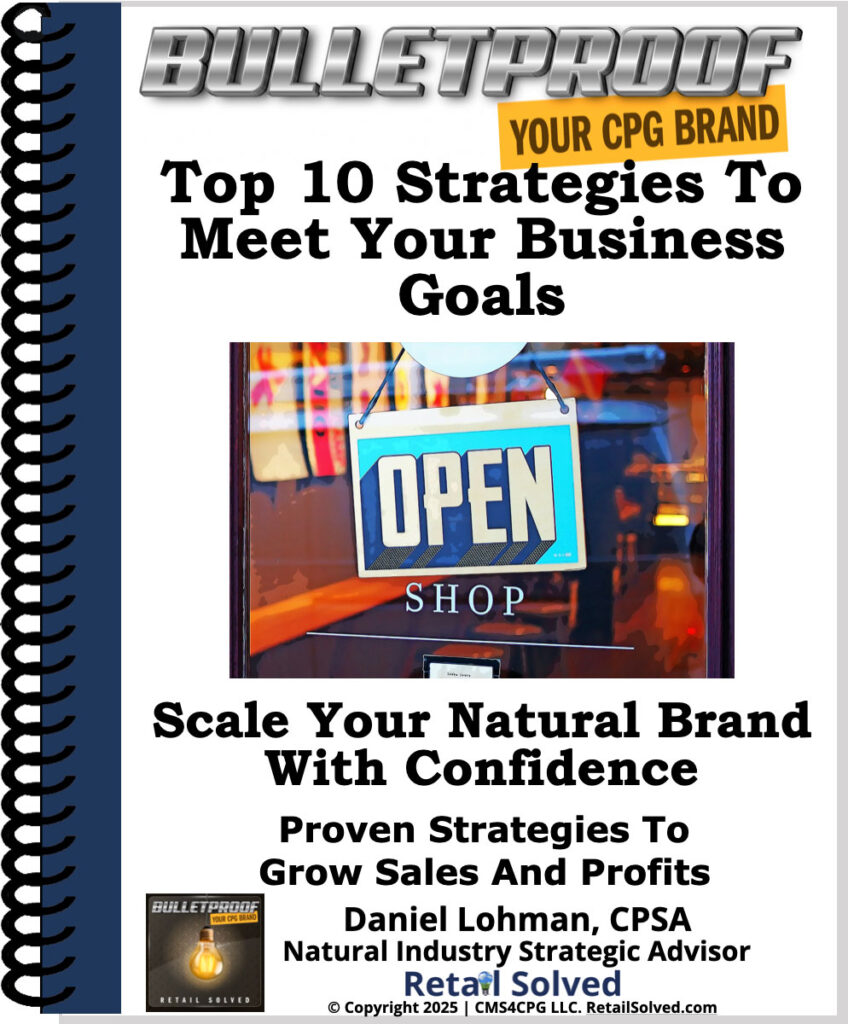
Want The Top 10 Strategies To Build Sustainable Sales And Profits?
Nothing happens until someone buys your products and shoppers can’t buy what they can’t find. To grow sustainable sales and profits, brands need to become experts in their core customers and their retail partners, maximize their product assortment and merchandising, and optimize their trade spending. This guide contains the secret to getting your product onto more store shelves and into the hands of more shoppers.
Image is the property of CMS4CPG LLC, distribution or reproduction is expressively prohibited.
